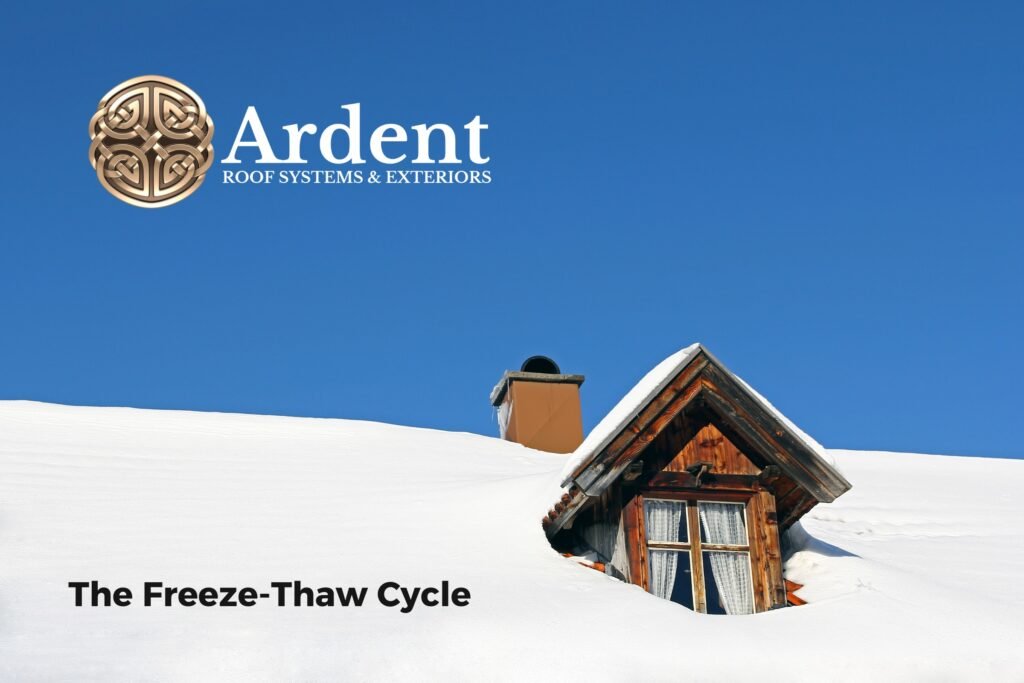Does it seem like you’ve got a leaky roof? Wait… Don’t panic!
It might just be the freeze-thaw cycle after one of Alberta’s famous deep-freezes.
As winter sets in, homeowners may notice water stains on ceilings or walls, leading to concerns about a leaky roof. However, these signs might not indicate a roof leak but rather attic frost buildup—a common issue during freeze-thaw cycles. Understanding this phenomenon can help you address the problem effectively and prevent potential damage.
What Is Attic Frost?
Attic frost forms when warm, humid air from your home rises into the attic and condenses on the underside of the roof sheathing. This condensation occurs due to temperature differences between the attic and the exterior environment. Over time, this moisture accumulates, leading to frost buildup. As temperatures rise, the frost melts, potentially causing water to drip onto ceilings and walls, mimicking the appearance of a roof leak.
How Freeze-Thaw Cycles Contribute to the Problem
In regions like Edmonton and Calgary, freeze-thaw cycles are prevalent! During these cycles, snow and ice on the roof melt during warmer periods and refreeze when temperatures drop. This process can lead to ice dams at the roof’s edge, preventing proper drainage and causing water to back up under shingles. The trapped water can then seep into the attic, exacerbating frost buildup and increasing the risk of interior water damage.
Identifying the Signs
While attic frost can resemble a roof leak, there are some key indicators can help you differentiate between the two:
- Timing of Stains: Water stains appearing during or after a thawing period, especially on ceilings or walls near the roofline, suggest attic frost rather than a roof leak.
- Location of Stains: Stains near bathroom vents or chimneys may indicate condensation issues rather than a roof leak.
- Presence of Frost: Visible frost on attic surfaces during cold weather is a clear sign of condensation problems.
Preventive Measures
To mitigate attic frost and its associated risks:
- Enhance Insulation: Ensure your attic is properly insulated to prevent warm air from escaping into the attic space. This helps maintain consistent temperatures and reduces condensation.
- Improve Ventilation: Adequate attic ventilation allows for proper airflow, helping to regulate temperature and humidity levels. This balance is crucial in preventing frost formation. Learn about our ventilation services!
- Seal Air Leaks: Identify and seal any gaps or leaks in the ceiling that allow warm air to enter the attic. Common culprits include gaps around pipes, vents, and chimneys.
- Regular Roof Inspections: Schedule periodic inspections with a professional roofing contractor to identify and address potential issues before they escalate. Learn about our maintenance and inspection services!
When to Seek Professional Help
If you notice persistent water stains, visible frost in the attic, or suspect attic condensation issues, it’s crucial to consult with a professional roofing contractor. One of our team members can conduct a thorough inspection, assess your attic’s ventilation and insulation, and recommend targeted solutions to prevent future damage. One of our roofing experts will also evaluate the integrity of your roof to ensure it hasn’t been compromised by ice dams or other winter-related issues. Regular maintenance and early intervention can save you from more costly repairs down the line, keeping your home safe and dry.
Conclusion
While attic frost can mimic the signs of a leaky roof, understanding its causes and symptoms can help you address the issue promptly. By enhancing insulation, improving ventilation, and sealing air leaks, you can protect your home from potential water damage and maintain a comfortable living environment. If you’ve got questions, Ardent is here to help!





